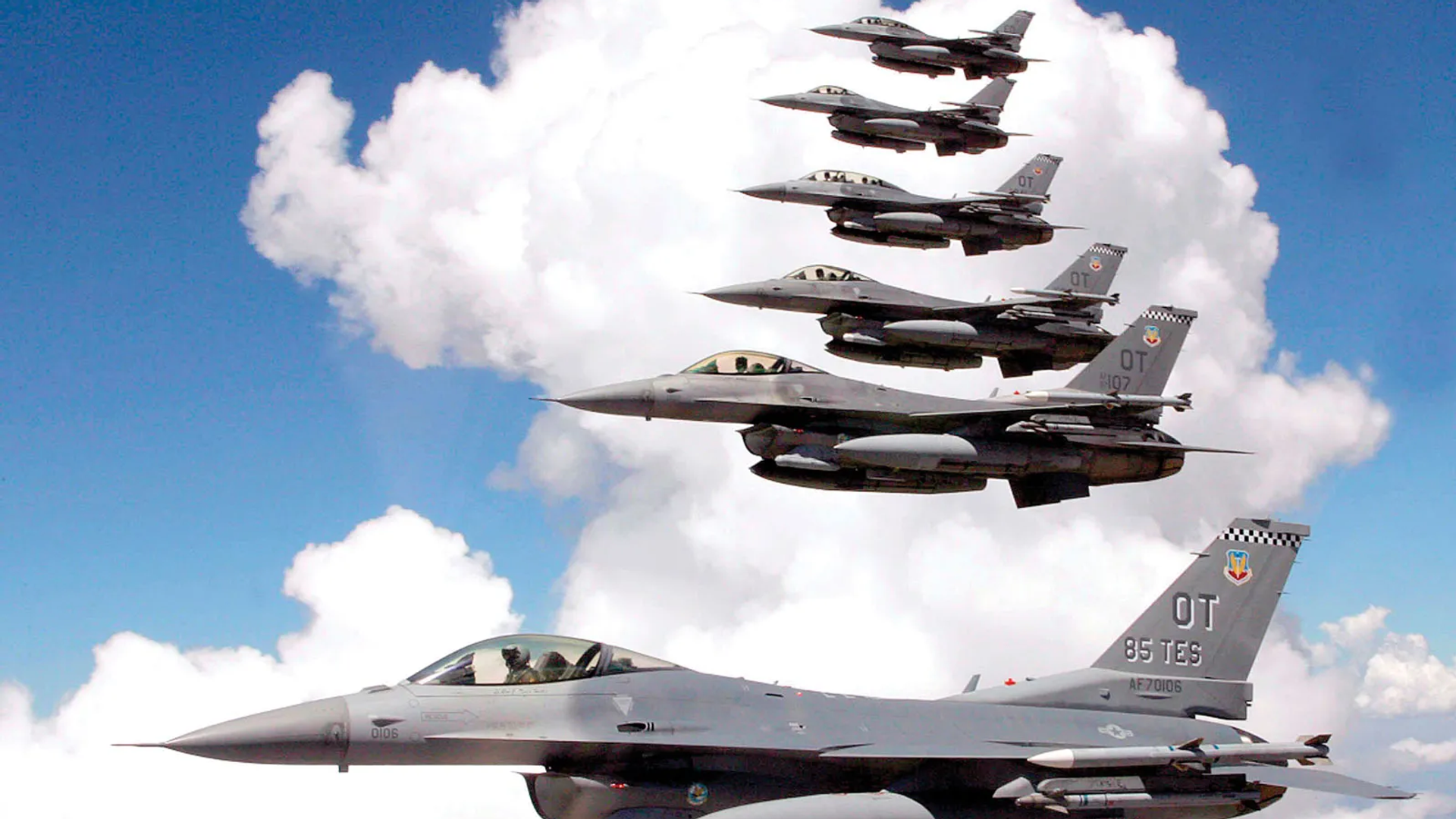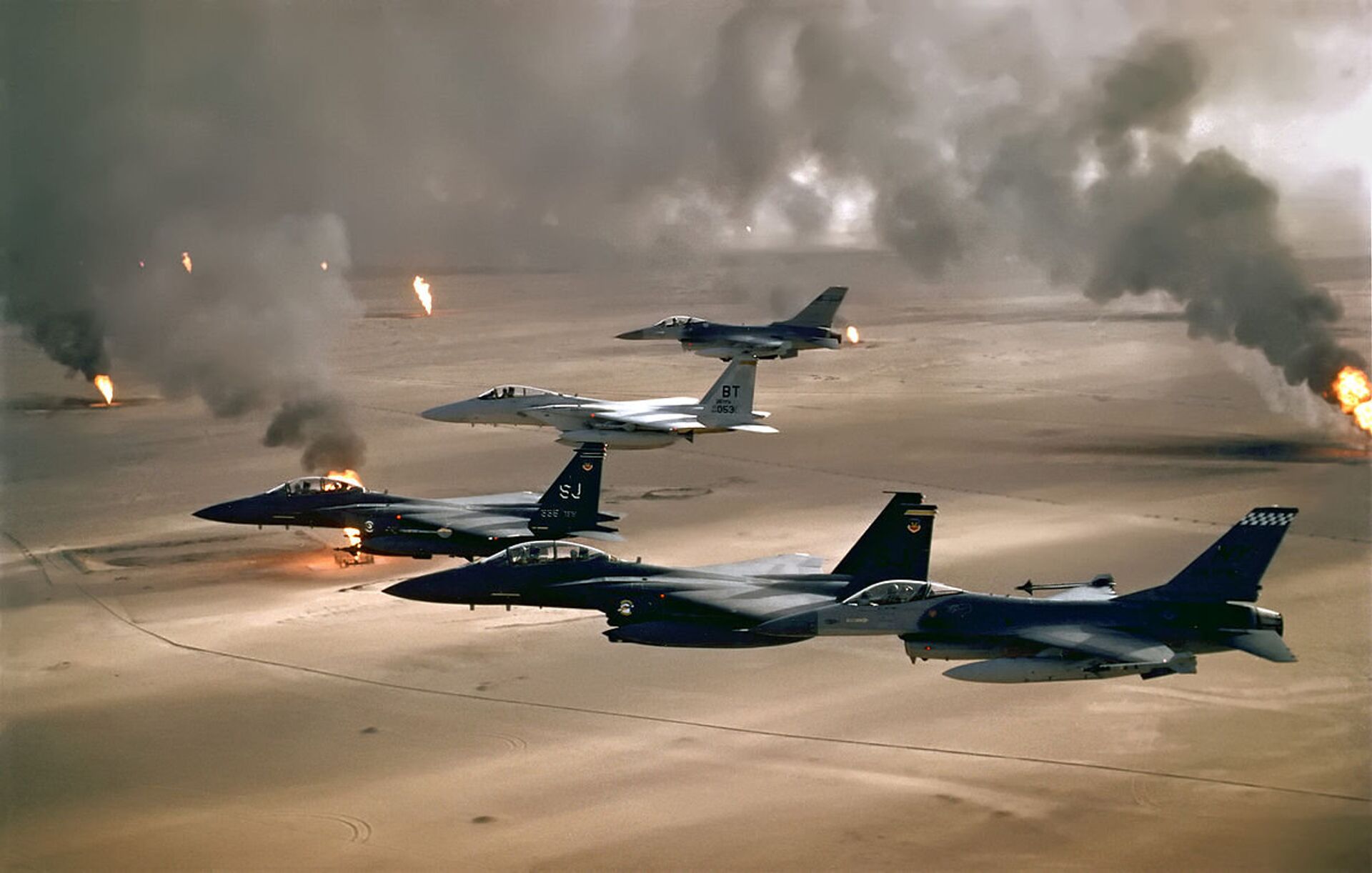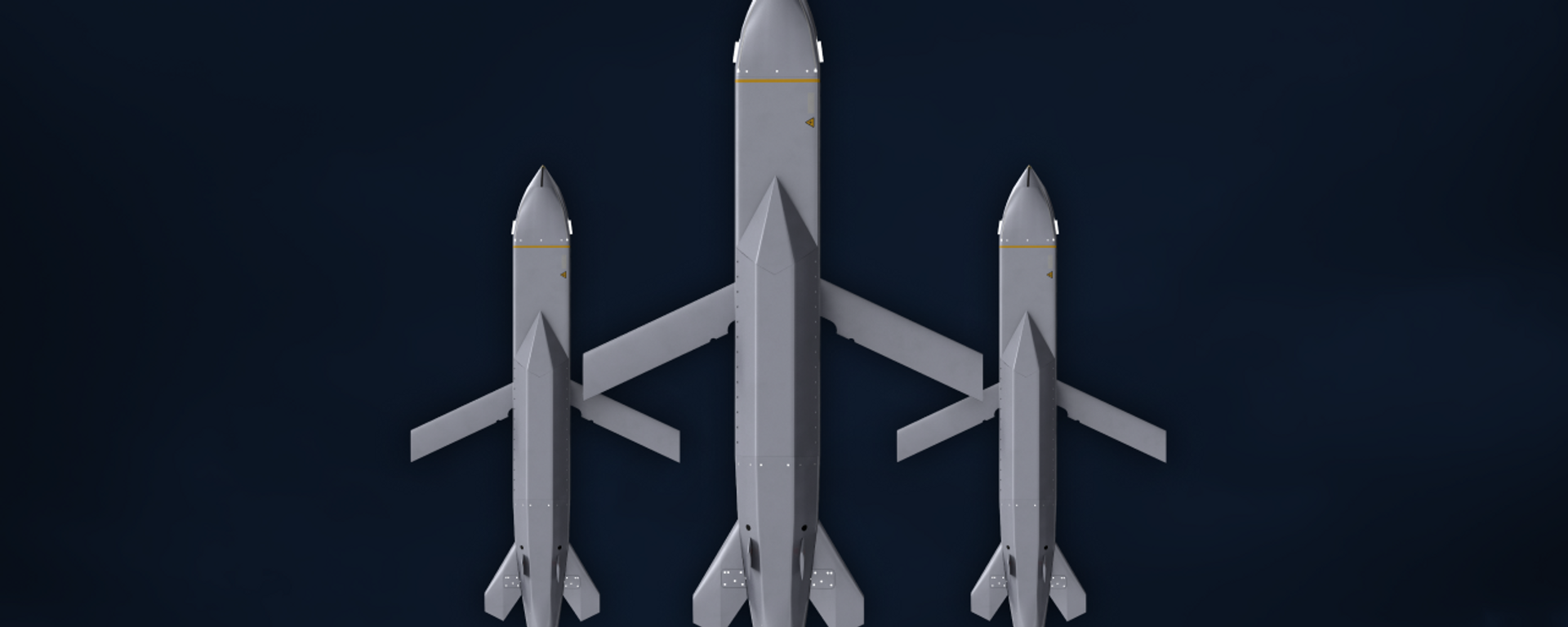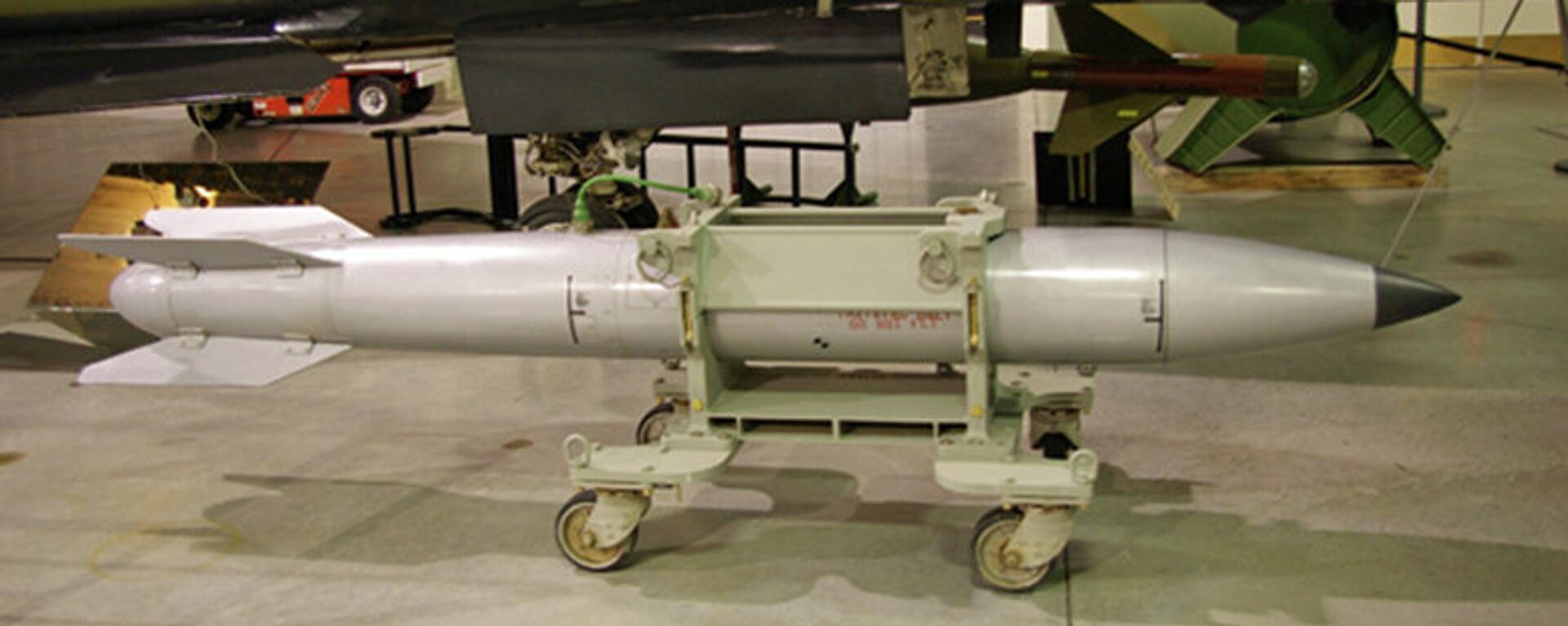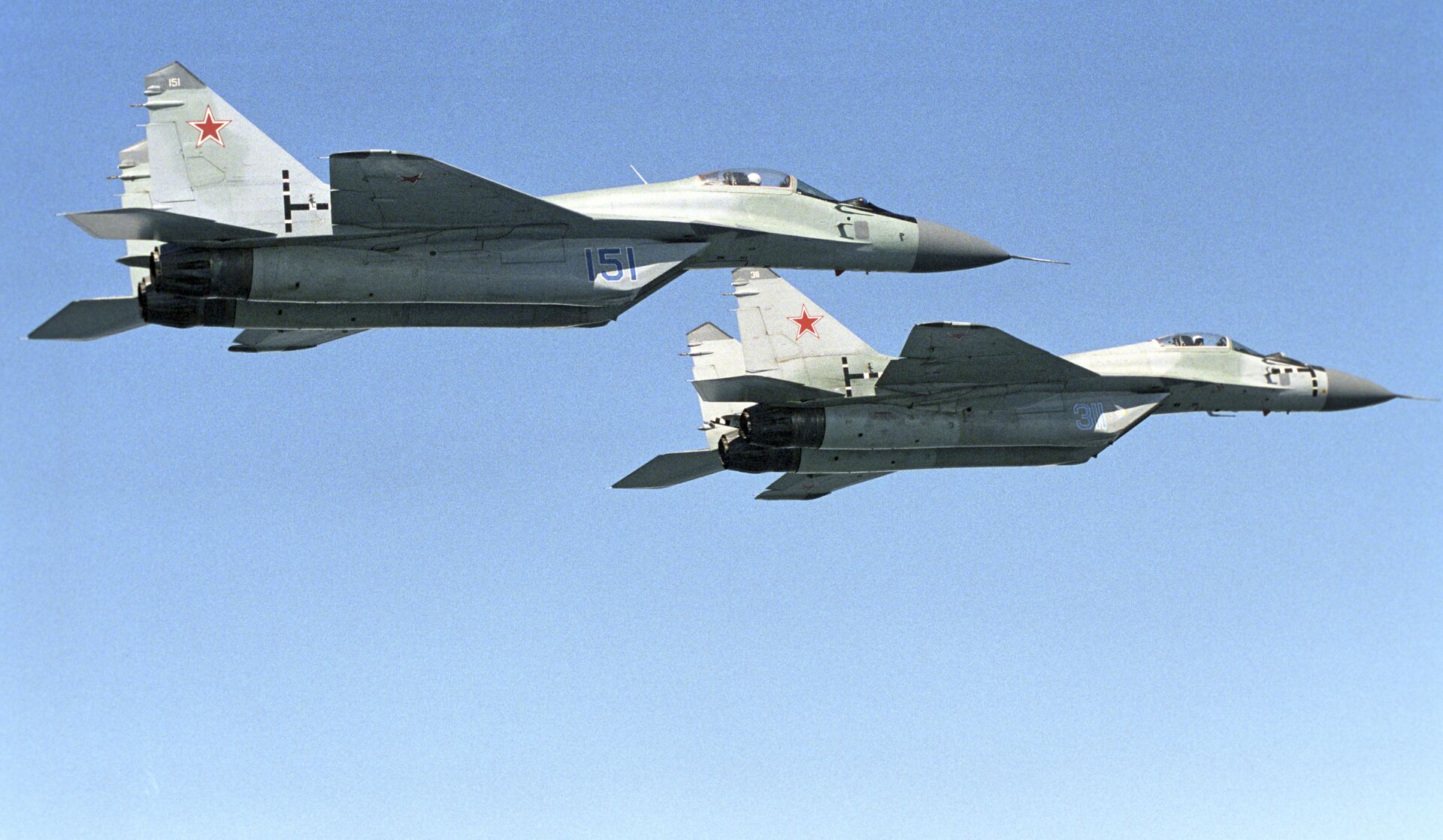https://sputnikglobe.com/20230522/why-does-ukraine-want-f-16s-1110518595.html
Why Does Ukraine Want F-16s?
Why Does Ukraine Want F-16s?
Sputnik International
Last week, the Biden administration took another step up the escalation ladder in the NATO-Russia proxy war in Ukraine, announcing plans to train Ukrainian pilots to fly F-16 fighter jets at undisclosed locations in Europe. Moscow slammed the move, and warned that it will take these steps “into account” in its military strategy.
2023-05-22T14:02+0000
2023-05-22T14:02+0000
2023-05-23T09:44+0000
military
ukraine
russia
nato
ukrainian air force
f-16
fighter
fighter jet
https://cdn1.img.sputnikglobe.com/img/07e7/05/16/1110518147_0:191:1600:1091_1920x0_80_0_0_067b5a5133d0b71c2d7c4ebca1e4f6bf.png
Details on the possible delivery of F-16 multirole fighter jets to Ukraine remain murky, with the Biden administration offering no information on whether the US itself would supply the jets, while several of its major NATO allies including Italy and Poland have already indicated they won’t be sending theirs.With media shooting down the possibility of Kiev getting F-16s from US clients in the Middle East – where more of the fourth-generation fighters are flying than in all of Europe put together, it may fall on Denmark, Norway, Belgium and the Netherlands, countries with an estimated stock of 125 F-16s, to make the ‘donation’ to make room for their new F-35s.Why Does Ukraine Want Fighter Jets?The Ukrainian Air Force and Ukrainian Army Aviation have been decimated over the course of the past year-and-a-half, losing over sixty fixed and 30+ rotary wing aircraft, including most of its pre-February 2022 inventory, plus jets and helicopters delivered to the country by its NATO patrons.With Soviet-built plane and helicopter inventories of former Warsaw Pact members-turned NATO countries running dry, Kiev needs a new source of plentiful, reasonably priced jets to continue operations in the proxy war with Russia.Additionally, Britain and France’s commitment to send Storm Shadow and SCALP-EG (the French variant of the Storm Shadow) long-range air-launched cruise missiles to Ukraine means Kiev may require a carrier for these weapons. Although the missiles are designed for use aboard Britain and France’s Tornado, Typhoon, Rafale and Mirage 2000 jets, modifying them for use aboard an F-16 may be considered easier than fitting them aboard Soviet-made jets.What’s So Special About the F-16?The F-16’s plentiful supply is probably its biggest selling point. Introduced in the late 1970s and manufactured by General Dynamics and Lockheed Martin, over 4,600 F-16 airframes have been produced, with the jet exported to over two dozen countries around the world over its nearly fifty-year lifespan. Such large production numbers potentially means plenty of cheap, second-hand planes, plus the spare parts to go with them. Depending on configuration, F-16s can reportedly run US and NATO taxpayers $12-$16 million apiece.What Kinds of Weapons Can the F-16 Carry? Can It Carry Nukes?Although originally envisioned as an air superiority fighter designed to take on Soviet fighter jets and bombers over the plains of Europe, the Middle East and Asia, the F-16 has been successfully modified to serve as a multi-role fighter-bomber, mostly against nations and non-state actors with limited or non-existent air defense capabilities.Your basic F-16 comes with a 20mm M61 Vulcan cannon for dogfights, and has 9 hard points (plus two for guidance pods) on which a variety of air-to-air, air-to-ground and anti-ship missiles can be fitted. These include AMRAAM, IRIS-T, Python and Sidewinder anti-air missiles, HARM, JASSM, Maverick and long-range JSOW (Joint Standoff Weapon) missiles for attacking ground targets, a variety of guided and unguided bombs, Harpoon and Penguin anti-ship missiles.The planes can also carry US B61 and B83 nuclear bombs, which have a blast yield of up to 400 kilotons (for comparison, the US nuclear bomb dropped on Hiroshima in 1945 had a blast yield of ‘just’ 15 kilotons).What is the F-16’s Top Speed and Range?The F-16 has a maximum speed of up to Mach 2.05 (or about 2,180 km/hour) with no weapons and a cruising speed of about 930 km per hour. The plane has a combat radius of about 860 km, which can be expanded dramatically using drop tanks, at the expense of maneuverability and the ability to carry weapons. The plane's ferry range is up to 4,200 km. The jets can also be refueled in the air, although it’s unlikely Ukraine would get such capabilities, given that it has not been given any NATO tankers, while its own Ilyushin Il-78 tankers are vulnerable to long-range Russian strikes the moment they’re taken into the air and subsequently remaining grounded. On top of that they're not compatible with NATO jets' refueling systems.Does the US Military Still Use F-16s?The United States has more than 1,000 operational F-16s in its inventory, with the planes flown by the United States Air Force, the Air National Guard, a small number with the US Navy, as well as NASA, which has used them as an aerodynamic testbed.What Makes the F-16 Famous?F-16s are some of the most recognizable military aircraft in the world, with images and videos of their use in Operational General Storm in 1991, the 2003 invasion of Iraq, NATO bombing operations in the former Yugoslavia, the war in Afghanistan, and the 2011 bombing of Libya engrained into the minds of people around the world. Israel, which became one of the first US allies to receive the planes and operates 175 of its modified Block C/I variant, has used the jets extensively against Syria and Iraq in the 1980s, against Lebanon in the 2006 war, and against Gazan and Lebanese militias –most recently in the 2021 Gaza War. Pakistan is another major operator of the fighters, deploying them repeatedly in skirmishes with India and its stocks of Soviet and Russian MiG-21 and Sukhoi Su-30MKI jets. The aircraft have also been used extensively by members of US and Saudi-led coalitions in airstrikes in Syria, Iraq and Yemen.What is the Russian Equivalent to the F-16?Western observers have often compared the F-16 to the Sukhoi Su-35, a Russian fourth-generation multi-role, air superiority fighter developed in the 1980s and introduced into service with the Russian military in the mid-2010s –and modified to incorporate elements of fifth generation aircraft, including advanced avionics. However, a more apt comparison would be the MiG-29, which was introduced in the 1980s as a direct answer to the F-16. The MiG boasts superior speed and maneuverability characteristics (max speed of Mach 2.25 vs Mach 2.05, range of 2,100 km vs. 860 km, service ceiling of 18,000 m vs 15,200 meters), but can only carry about 3,500 kg of armament, compared to 7,700 kg by some variants of the F-16, making it a true air superiority-focused jet. The MiG also had one other advantage – twin engines compared to the F-16’s lone power plant, which means in the event of an emergency, the MiG-29 will theoretically have a better chance of limping back to a friendly airbase than its American counterpart.Are Ukrainian Pilots Already Training to Fly F-16s? How Long Will That Process Take?The United States formally greenlit the training of Ukrainian pilots last week, with a White House official indicating that the process will “take place outside Ukraine at sites in Europe and will require months to complete.” Washington hopes to “begin this training in the coming months.” In other words, training has not yet started, if Washington’s press officials are to be believed, anyway.A US Air Force assessment obtained by US media indicated that training would likely take about four months – far below the 18 months previously estimated. Cuts in training time will likely mean reduced efficiency in combat, serving to compound the problems the fighters will inevitably face if pressed into combat against Russia, like long-range ground and air-based anti-air missiles, and hypersonic and ballistic missile strikes against their bases.
https://sputnikglobe.com/20230515/details-of-uks-storm-shadow-cruise-missile-revealed--1110376749.html
https://sputnikglobe.com/20230403/us-scientist-sounds-alarm-about-incident-involving-american-nuke-at-dutch-air-base-1109087914.html
ukraine
russia
Sputnik International
feedback@sputniknews.com
+74956456601
MIA „Rossiya Segodnya“
2023
News
en_EN
Sputnik International
feedback@sputniknews.com
+74956456601
MIA „Rossiya Segodnya“
Sputnik International
feedback@sputniknews.com
+74956456601
MIA „Rossiya Segodnya“
ukraine, f-16, fighting falcon, united states, russia, nato, proxy war, fighter jet, fighter-bomber, characteristics, f-16, f 16, f-16 fighting falcon, f-16 fighter jet, f 16 fighter jet cost, f-16 cost per flight hour, why does ukraine want f-16, f16 ukraine how many, f-16 ukraine training, f-16 ukraine news, f-16 ukraine, f-16 fighter jet top speed, f-16 fighter jet weapons
ukraine, f-16, fighting falcon, united states, russia, nato, proxy war, fighter jet, fighter-bomber, characteristics, f-16, f 16, f-16 fighting falcon, f-16 fighter jet, f 16 fighter jet cost, f-16 cost per flight hour, why does ukraine want f-16, f16 ukraine how many, f-16 ukraine training, f-16 ukraine news, f-16 ukraine, f-16 fighter jet top speed, f-16 fighter jet weapons
Why Does Ukraine Want F-16s?
14:02 GMT 22.05.2023 (Updated: 09:44 GMT 23.05.2023) Last week, the Biden administration took another step up the escalation ladder in the NATO-Russia proxy war in Ukraine, announcing plans to train Ukrainian pilots to fly F-16 fighter jets at undisclosed locations in Europe. Moscow slammed the move, and warned that it will take these steps "into account" in its military strategy.
Details on the possible delivery of F-16 multirole fighter jets to Ukraine remain murky, with the Biden administration
offering no information on whether the US itself would supply the jets, while several of its major NATO allies including
Italy and
Poland have already indicated they won’t be sending theirs.
With media
shooting down the possibility of Kiev getting F-16s from US clients in the Middle East – where more of the fourth-generation fighters are flying than in all of Europe put together, it may fall on Denmark, Norway, Belgium and the Netherlands, countries with an estimated stock of 125 F-16s, to make the ‘donation’ to make room for their new F-35s.
Why Does Ukraine Want Fighter Jets?
The Ukrainian Air Force and Ukrainian Army Aviation have been decimated over the course of the past year-and-a-half, losing over sixty fixed and 30+ rotary wing aircraft, including most of its pre-February 2022 inventory, plus jets and helicopters delivered to the country by its NATO patrons.
With Soviet-built plane and helicopter inventories of former Warsaw Pact members-turned NATO countries running dry, Kiev needs a new source of plentiful, reasonably priced jets to continue operations in the proxy war with Russia.
Additionally, Britain and France’s commitment to send Storm Shadow and SCALP-EG (the French variant of the Storm Shadow) long-range air-launched cruise missiles to Ukraine means Kiev may require a carrier for these weapons. Although the missiles are designed for use aboard Britain and France’s Tornado, Typhoon, Rafale and Mirage 2000 jets, modifying them for use aboard an F-16 may be considered easier than fitting them aboard Soviet-made jets.
What’s So Special About the F-16?
The F-16’s plentiful supply is probably its biggest selling point. Introduced in the late 1970s and manufactured by General Dynamics and Lockheed Martin, over 4,600 F-16 airframes have been produced, with the jet exported to over two dozen countries around the world over its nearly fifty-year lifespan. Such large production numbers potentially means plenty of cheap, second-hand planes, plus the spare parts to go with them. Depending on configuration, F-16s can reportedly run US and NATO taxpayers
$12-
$16 million apiece.
What Kinds of Weapons Can the F-16 Carry? Can It Carry Nukes?
Although originally envisioned as an air superiority fighter designed to take on Soviet fighter jets and bombers over the plains of Europe, the Middle East and Asia, the F-16 has been successfully modified to serve as a multi-role fighter-bomber, mostly against nations and non-state actors with limited or non-existent air defense capabilities.
Your basic F-16 comes with a 20mm M61 Vulcan cannon for dogfights, and has 9 hard points (plus two for guidance pods) on which a variety of air-to-air, air-to-ground and anti-ship missiles can be fitted. These include AMRAAM, IRIS-T, Python and Sidewinder anti-air missiles, HARM, JASSM, Maverick and long-range JSOW (Joint Standoff Weapon) missiles for attacking ground targets, a variety of guided and unguided bombs, Harpoon and Penguin anti-ship missiles.
The planes can also carry US B61 and B83 nuclear bombs, which have a blast yield of up to 400 kilotons (for comparison, the US nuclear bomb dropped on Hiroshima in 1945 had a blast yield of ‘just’ 15 kilotons).
What is the F-16’s Top Speed and Range?
The F-16 has a maximum speed of up to Mach 2.05 (or about 2,180 km/hour) with no weapons and a cruising speed of about 930 km per hour. The plane has a combat radius of about 860 km, which can be expanded dramatically using drop tanks, at the expense of maneuverability and the ability to carry weapons. The plane's ferry range is up to 4,200 km. The jets can also be refueled in the air, although it’s unlikely Ukraine would get such capabilities, given that it has not been given any NATO tankers, while its own Ilyushin Il-78 tankers are vulnerable to long-range Russian strikes the moment they’re taken into the air and subsequently remaining grounded. On top of that they're not compatible with NATO jets' refueling systems.
Does the US Military Still Use F-16s?
The United States has
more than 1,000 operational F-16s in its inventory, with the planes flown by the United States Air Force, the Air National Guard, a small number with the US Navy, as well as NASA, which has used them as an aerodynamic testbed.
What Makes the F-16 Famous?
F-16s are some of the most recognizable military aircraft in the world, with images and videos of their use in Operational General Storm in 1991, the 2003 invasion of Iraq, NATO bombing operations in the former Yugoslavia, the war in Afghanistan, and the 2011 bombing of Libya engrained into the minds of people around the world. Israel, which became one of the first US allies to receive the planes and operates 175 of its modified Block C/I variant, has used the jets extensively against Syria and Iraq in the 1980s, against Lebanon in the 2006 war, and against Gazan and Lebanese militias –most recently in the 2021 Gaza War. Pakistan is another major operator of the fighters, deploying them repeatedly in skirmishes with India and its stocks of Soviet and Russian MiG-21 and Sukhoi Su-30MKI jets. The aircraft have also been used extensively by members of US and Saudi-led coalitions in airstrikes in Syria, Iraq and Yemen.
What is the Russian Equivalent to the F-16?
Western observers
have often compared the F-16 to the Sukhoi Su-35, a Russian fourth-generation multi-role, air superiority fighter developed in the 1980s and introduced into service with the Russian military in the mid-2010s –and modified to incorporate elements of fifth generation aircraft, including advanced avionics. However, a more apt comparison would be the MiG-29, which was introduced in the 1980s as a direct answer to the F-16. The MiG boasts superior speed and maneuverability characteristics (max speed of Mach 2.25 vs Mach 2.05, range of 2,100 km vs. 860 km, service ceiling of 18,000 m vs 15,200 meters), but can only carry about 3,500 kg of armament, compared to 7,700 kg by some variants of the F-16, making it a true air superiority-focused jet. The MiG also had one other advantage – twin engines compared to the F-16’s lone power plant, which means in the event of an emergency, the MiG-29 will theoretically have a better chance of limping back to a friendly airbase than its American counterpart.
Are Ukrainian Pilots Already Training to Fly F-16s? How Long Will That Process Take?
The United States formally greenlit the training of Ukrainian pilots last week, with a White House official
indicating that the process will “take place outside Ukraine at sites in Europe and will require months to complete.” Washington hopes to “begin this training in the coming months.” In other words, training has not yet started, if Washington’s press officials are to be believed, anyway.
A US Air Force assessment obtained by US media indicated that training would likely take about
four months – far below the
18 months previously estimated. Cuts in training time will likely mean reduced efficiency in combat, serving to compound the problems the fighters will inevitably face if pressed into combat against Russia,
like long-range ground and air-based anti-air missiles, and hypersonic and ballistic missile strikes against their bases.